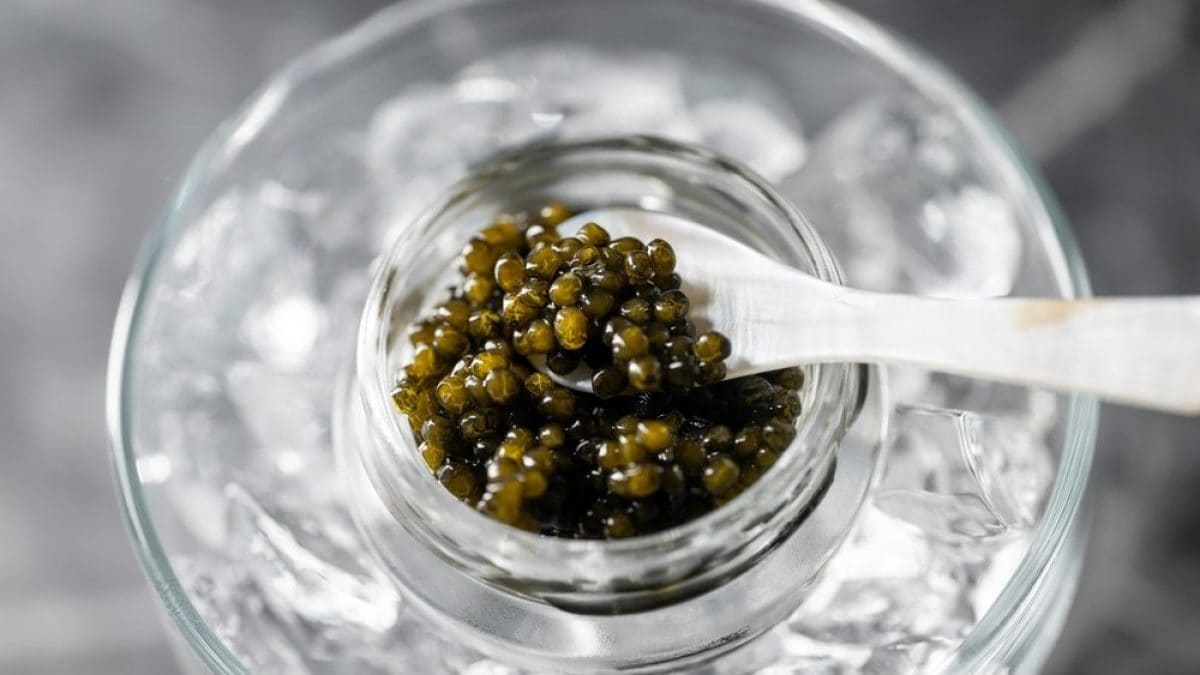
Always a symbol of luxury and refinement, caviar is a truly special and highly prized ingredient. It's no coincidence that it's associated with wealth: the small fish eggs, in fact, can fetch truly staggering prices, ranging from $150 to $10,000 per kilo. This is why sometimes, in everyday life, we prefer a more affordable alternative like lumpfish.
But caviar's high price isn't a coincidence: its price isn't a market whim, but depends on a series of specific factors, including quality, provenance, availability, and demand. Two other factors also impact the final price of caviar: the difficulty of production, which requires considerable dedication and patience, and the rarity of the fish from which the eggs are obtained, which, being at risk of extinction, cannot be caught but must be farmed.
What is Caviar?
Caviar is a gastronomic delicacy obtained from the eggs of the sturgeon, Acipenser sturio Linnaeus, one of the largest freshwater and brackish water fish in the world. Caviar's texture is delicate and soft, almost creamy, and its flavor is rich and complex, with nuances ranging from sweetness to a light nutty aftertaste, depending on the sturgeon species from which the eggs originate.
In fact, there are approximately 25 different varieties of sturgeon in the world, distributed mainly in the Northern Hemisphere, but only about ten are typically used for the roe that becomes caviar after being salted. Some of the most prized include Beluga, Sevruga, and Oscietra, each offering a unique and intense flavor experience.
Since 1998, sturgeons have been listed in CITES, the organization that protects endangered species, and their wild fishing has been heavily regulated or, in some cases, banned entirely. Today, the caviar and sturgeon on the market are almost entirely farmed.
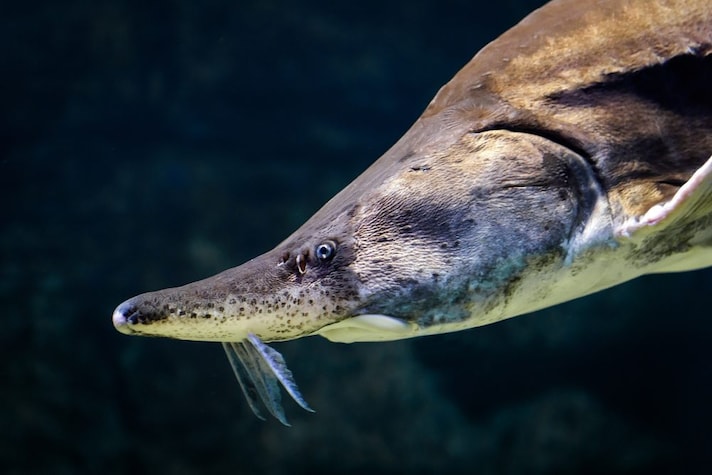
How is Caviar Produced?
Understanding the caviar production process is essential to understanding the reason for this product's high price: its processing, in fact, significantly impacts the final cost, as it involves an extremely long production cycle.
Since sturgeon cannot be caught, they must be raised on a farm, which requires a significant investment of time, money, and resources. Furthermore, processing sturgeon eggs requires a careful and delicate procedure that is done entirely by hand.
Once upon a time, the process required cutting open the animal's belly, resulting in its immediate death. Today, several alternative practices exist, promoted by some companies. The product can be extracted directly from the sturgeon's ovaries by massaging them with a special sieve to induce labor and thus extract the eggs from the belly, without the need for a clean, fatal cut. The raw material must be processed immediately: once extracted, it is washed in cold water and preserved in salt, a process that can be done dry or in brine.
The actual caviar recipe, however, remains a secret to each producer. Caviar production is an art closely tied to traditions passed down from generation to generation, so each producer has their own secret, personal formula for achieving an excellent product. Generally speaking, however, limited use of salt during preparation is synonymous with a high-quality product. It's no coincidence that the finest quality caviar is called malossol, a Russian word meaning "with little salt."
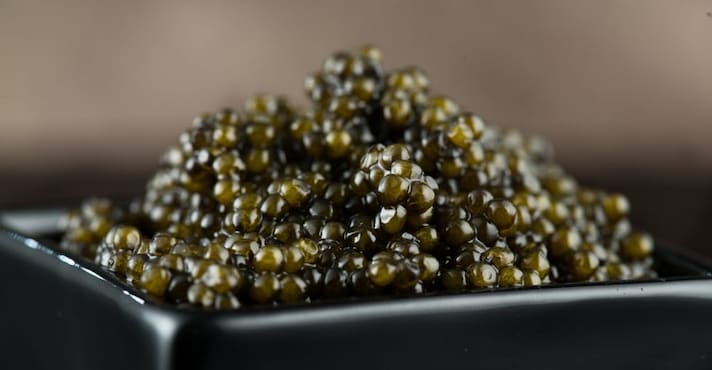
Once salting is complete, excess salt is removed by sifting with horsehair tools, ensuring the utmost delicacy. Only very valuable caviars, such as Malossol, require lower storage temperatures to prevent the formation of bacteria: these varieties are typically stored between -3°C/26°F/ and 0°C/32°F.
As you can easily imagine, the farming and manual processing process is long and delicate, which is why it's a major factor in caviar's exclusivity and its sky-high prices. But it's not the only factor.
Non-Violent Extraction Methods
As we mentioned, all sturgeons were once killed to extract the eggs from their bellies through a clean cut. Today, many farms practice the method described above, which doesn't necessarily involve killing the animal. The most innovative technique is called milking or "non-lethal extraction," and it works like this: the sturgeon is farmed (or captured in specific cases), then subjected to an ultrasound scan to assess the maturity of the eggs in the ovarian sacs. After being sedated, a catheter is gently inserted into the mature ovarian sac to extract the eggs. Once the eggs are extracted, the sturgeon is awakened and released into its natural environment.
What Determines the Price of Caviar
The time and method of preparing caviar are certainly one of the reasons for this product's high price, but it's not the only factor affecting the final price. The endangered status of sturgeon, a fish at serious risk of extinction, affects the product's rarity and even its long shelf life.
Sturgeon are very long-lived, living up to 100 years, which means they reach sexual maturity, which allows them to produce eggs, at a later age. Farmers must therefore wait several years before producing fertile animals, which obviously affects the price of the product.
You should also consider that not all sturgeons produce eggs of the same quality, and for this very reason some breeds are more valuable than others; usually, the rarest breeds are those from which the most valuable eggs are extracted. The most expensive and delicate caviar of all is that extracted from the black beluga sturgeon : its shiny, creamy eggs can fetch up to $10,000 per kilo.
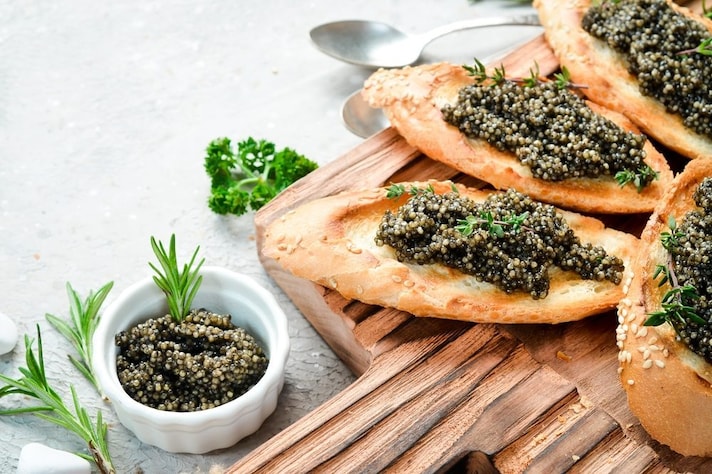
The Ossietra and Sevruga breeds are almost as valuable as the Beluga, while Asetra caviar, produced from the famous Russian sturgeon, is less rare but still of high quality. There is also a very rare type of white caviar extracted from the extremely rare albino Beluga sturgeon, the so-called Almas caviar: it is the most valuable quality of all, reaching tens of thousands of dollars per kilo and is packaged in 24-karat gold cans.
Even within the most prized breeds, a distinction must be made, because not all eggs are the same. The quality of caviar also depends on the size of the eggs, their color, and the care taken in selecting and processing, all factors that affect the final price. Furthermore, caviar is often produced in distant countries like China and Russia, so transportation costs and special temperature-controlled equipment that prevents the product from spoiling also play a role.
Last but not least, supply and demand also influence the price. Caviar production is extremely limited, making it highly sought-after despite it being a food not everyone can afford. Its high demand among certain social classes and limited production cause caviar's price to reach the exorbitant prices we know today.
Red Caviar: What It Is and How it Differs From Black Caviar
Sometimes you can also find a type of caviar that's different from the classic one, especially in color: red caviar is generally obtained from the eggs of salmon such as Sockeye, Keta, Chum, and Pink Salmon. It's technically caviar, because it uses fish eggs, but it's considered less valuable than sturgeon caviar for a number of factors, not least of which is the rarity of sturgeon compared to salmon.
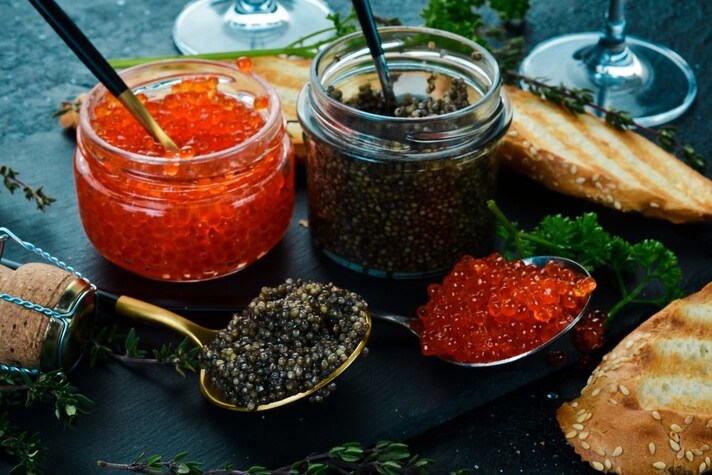
The eggs are smaller than black caviar, with a diameter of about 5 mm. Their color varies from red to orange-red, with more or less intense hues depending on the salmon species. The surface is smooth and shiny, and the flavor is more delicate than sturgeon caviar: the Sockeye and Keta salmon varieties are considered the most prized. Naturally, the price also differs, as salmon caviar is more affordable than black caviar: its price can range from 20 dollars to 100 dollars per gram, depending on the species and quality.
;Resize,width=767;)
